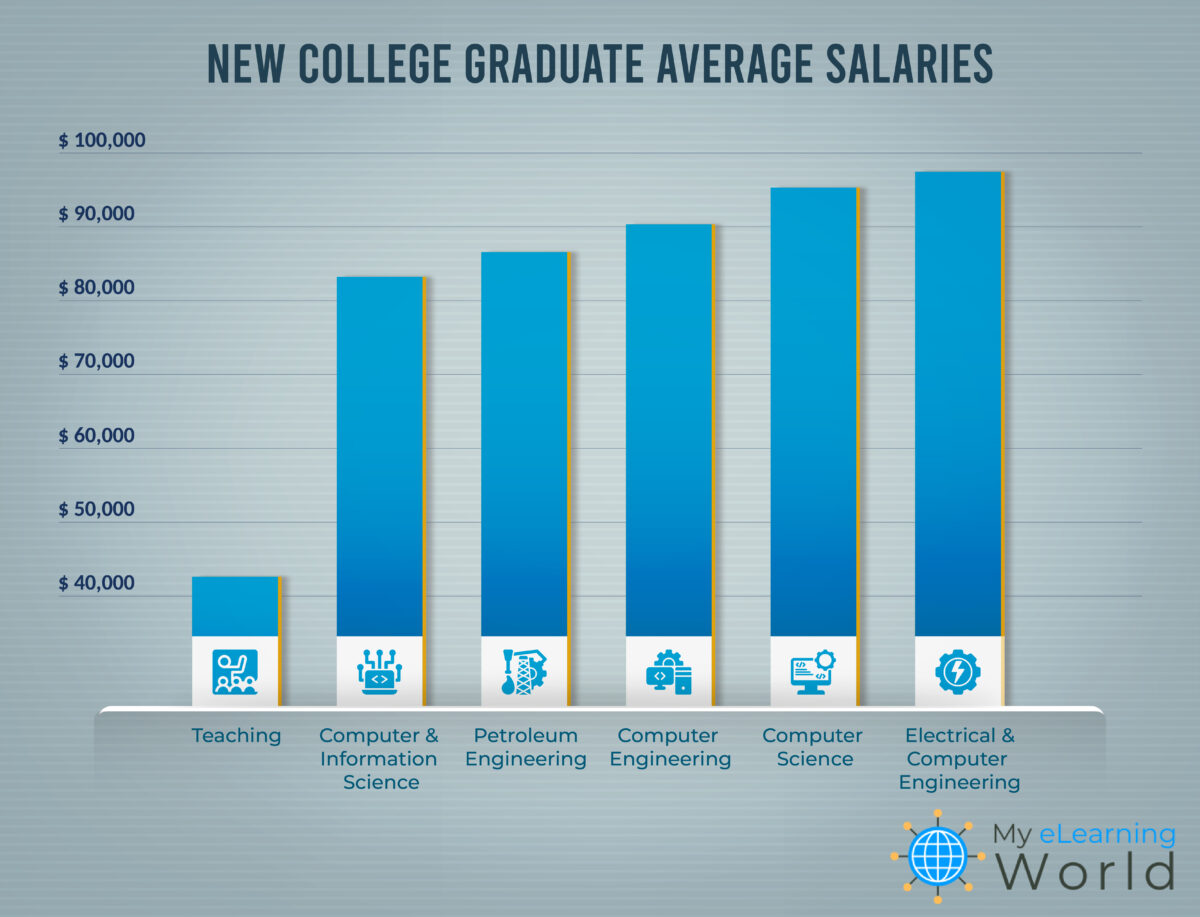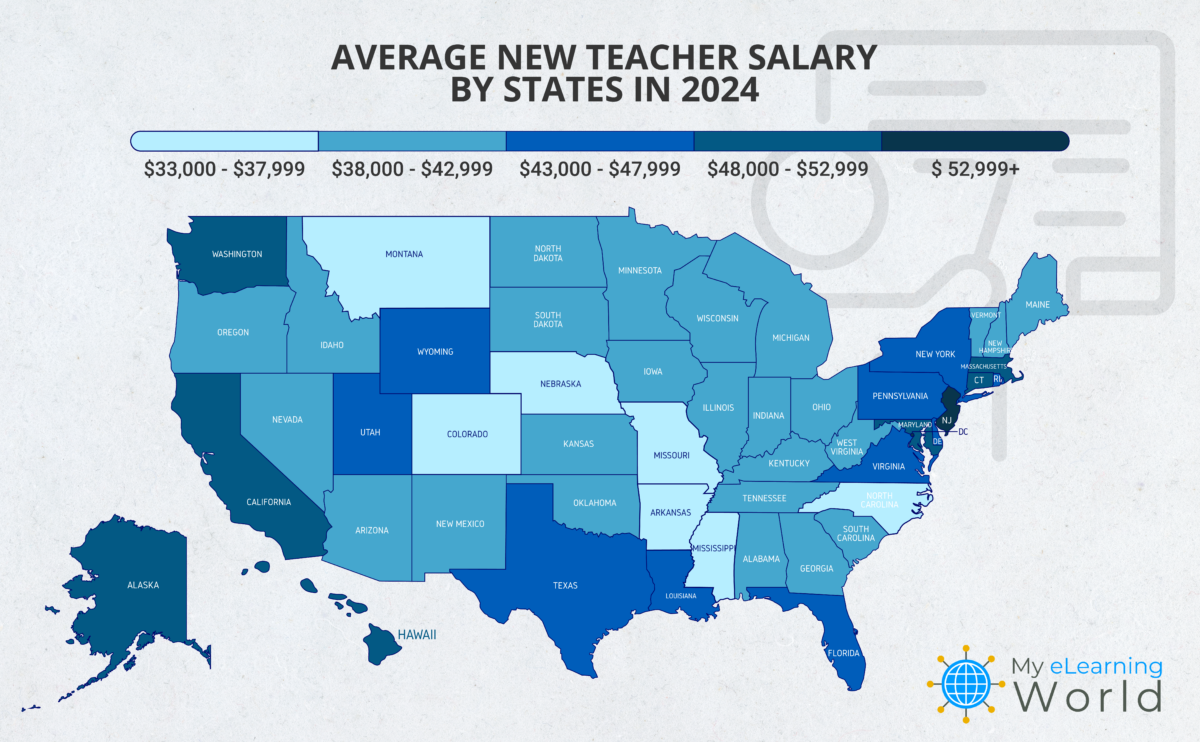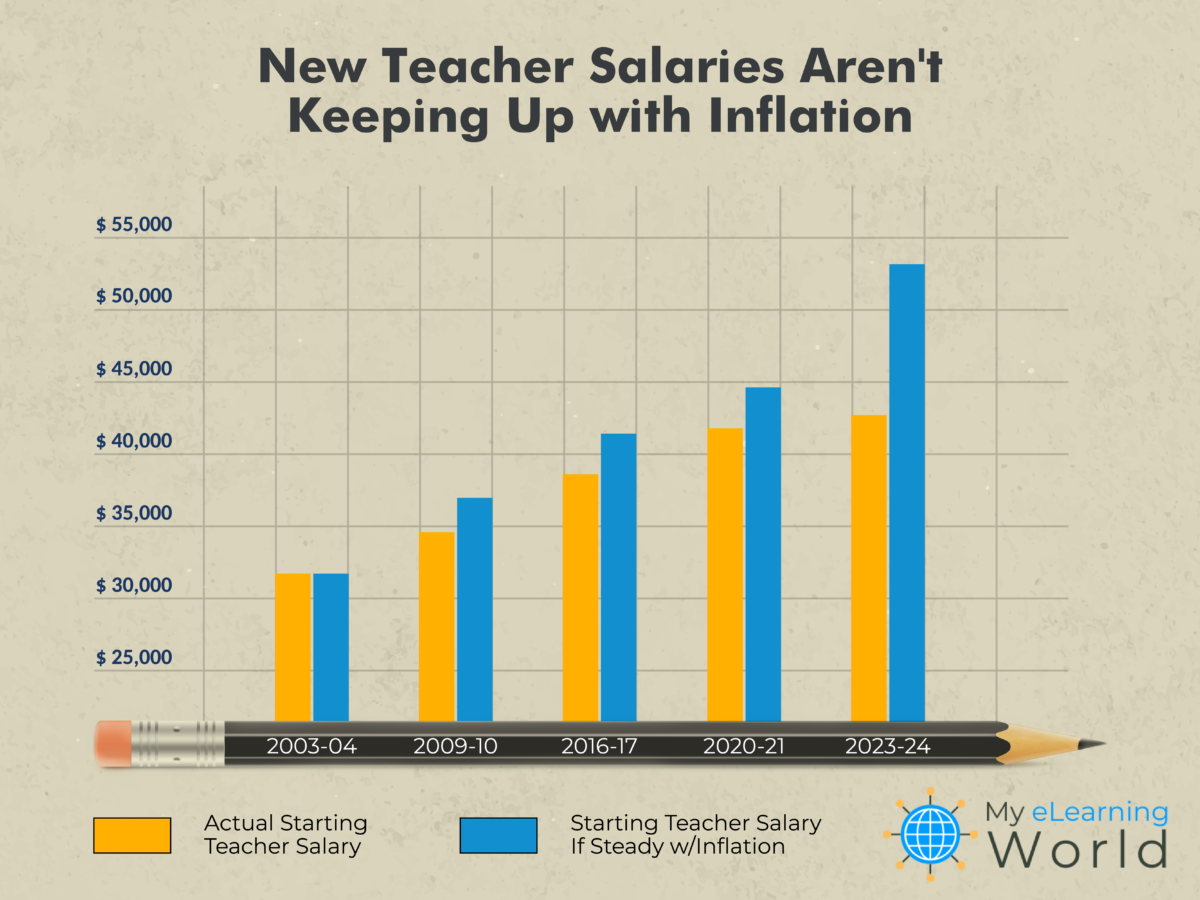Over the last few years, schools all across the US have been struggling to fill all of their teaching vacancies. A big part of the problem? Teachers just aren’t getting paid enough.
Teacher salaries, especially for those just starting out, have barely budged over the years, remaining mostly flat. Despite the critical role teachers play in shaping future generations, their compensation has not kept pace with inflation, leading to a significant decrease in real earnings over the last 20 years.
In fact, based on our analysis, we found that new teachers are earning nearly 20% less than they were about two decades ago when accounting for inflation.
If starting salaries for new teachers had kept pace with inflation over the last 20 years, a teacher just starting out would be making $53,303 per year right now. Instead, the average annual income for a new teacher is around $42,844 according to the latest data from the National Education Association.
That’s a difference of $10,459 a year, representing an effective earnings decline of just under 20%.
Not only that, but we also found that a first-year teacher is earning about 28% less per year than the average new college graduate who makes nearly $59,000 annually.

Given these factors, it’s hardly shocking to learn that enrollment in education programs is on a steep decline, signaling a potential drop in the number of new teachers entering the profession in the near future.
“The teacher shortage we’re facing today is more than a crisis, it’s a national emergency,” said Scott Winstead, founder of My eLearning World. “The gap between the number of qualified teachers needed and those entering the profession is widening at an alarming rate. Crowded classrooms, diminished student support, and the threat of school closures are just the tip of the iceberg. We have to address this issue head-on to ensure the future of quality education in our country.”
Furthermore, recent data shows that about one-third of US K-12 teachers are seriously considering leaving the profession with many taking their skillset to corporate settings like instructional design, corporate training, and other roles with more career advancement opportunities.
RELATED: How to Make the Transition from Teacher to Instructional Designer
“The teacher pay problem has gotten so bad that surveys show the majority of parents don’t want their kids to pursue a career in teaching. It’s a wake-up call for us to reevaluate and enhance the appeal of the teaching profession,” Winstead added. “Improving teacher salaries is a crucial step in this direction. By offering competitive pay, we can attract passionate and talented individuals to education, ensuring a brighter future for both our children and the teaching profession.”

In response to the growing crisis, lawmakers in 23 states have taken action, proposing bills aimed at raising minimum teacher salaries, providing annual bonuses, and offering additional compensation for paraeducators and special education teachers. These legislative efforts reflect a growing recognition of the need to support educators more effectively.
Notably, such bills have successfully passed in Arkansas, Florida, Maryland, Oklahoma, Tennessee, Utah, and Washington, marking a positive step forward in the fight to ensure fair compensation for teachers.
The legislative actions taken by these states offer a glimmer of hope, but there is still a lot of work to be done to address the issue comprehensively.
As we look to the future, it’s crucial for policymakers, educators, and the public to continue advocating for fair teacher compensation.
Ensuring that teachers are paid a wage that reflects their contribution to society is essential for attracting and retaining the talented educators necessary to provide students with the high-quality education they deserve.

